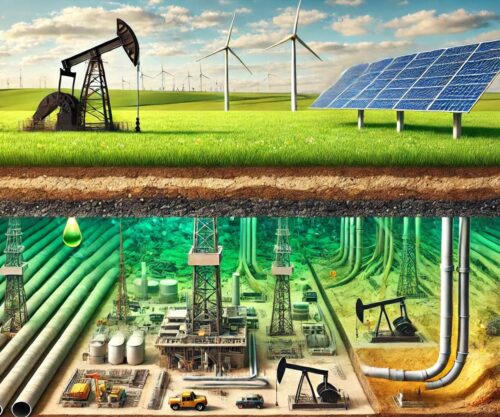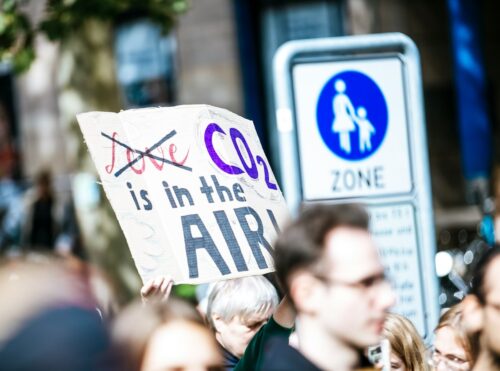Post-1940s ‘Agricultural Intensification’ Caused Deep Cooling, 400% Crop Growth
In a new paper published in Geophysical Research Letters, three MIT scientists assert that the human influence on the climate of the Central United States is dominated by agricultural activity rather than greenhouse gas (GHG) emissions.
Human activity has caused a significant long-term cooling trend (-0.35°C between the 1940s and 2009) and higher rainfall totals via the mechanism of “agricultural intensification” – a photosynthesis-associated increase in the air’s water vapor or humidity levels due to an explosive (400%) increase in crop production and yield since the 1940s.
The authors assert that the human-caused post-1940’s cooling trend and increase in precipitation dramatically conflict with climate model expectations which project a human-caused warming trend and decreasing rainfall with the advent of increasing GHG emissions.
From all appearances, the effects of the human influence on climate are still teeming with inconsistencies and contradictions.

Alter et al., 2017
Summary
“Observations and numerical simulations both suggest that agricultural intensification has cooled temperatures and enhanced rainfall.”
Climate Models Predicated On A Driving Influence For GHG Emissions…Are Wrong

“From 1910- 1949 (pre-agricultural development, pre-DEV) to 1970-2009 (full agricultural development, full-DEV), the central United States experienced large-scale increases in rainfall of up to 35% and decreases in surface air temperature of up to 1°C during the boreal summer months of July and August … which conflicts with expectations from climate change projections for the end of the 21st century (i.e., warming and decreasing rainfall) (Melillo et al., 2014).”
“The output from this subset of CMIP5 models [climate models predicated on CO2 emissions assumptions] indicates only small changes in rainfall (between -2% and +4%) during the summer in the central United States, which are much smaller than the frequency distributions of rainfall change from both the observational data and the agricultural intensification simulations. This implies that GHG [greenhouse gas] emissions may not have been a major driver of the observed changes in summer rainfall.”
“[T]he CMIP5 [climate model] results instead show an increase in temperature and a much-subdued increase in specific humidity, which may be due to GHG-induced warming and subsequent increases in the water vapor holding capacity of the atmosphere, respectively. Thus, it seems that GHG emissions do not contribute greatly to the regional changes in the summer climate that have been observed in the central United States.”
Mechanism: More Crops = More Water Vapor = More Cooling
“Within the regional climate model, an increase in photosynthesis for cropped areas leads to a decrease in stomatal resistance within those areas. This allows more water vapor to be released into the atmosphere through evapotranspiration (ET), specifically through transpiration. This increased flow of water out of the plants results in an increase in atmospheric moisture (humidity) over the same areas. Regarding the energy budget, the latent heat flux increases in tandem with ET, but the sensible heat flux decreases, resulting in temperature decreases over the cropped areas.”
‘Unprecedented Growth’ In Crop Productivity Since The 1940s

“Over the last century, the world has experienced unprecedented growth in cropland area and productivity (Ramankutty & Foley, 1999; Pielke et al., 2011). As part of this expansive agricultural development, the Corn Belt of the central United States – one of the most productive agricultural areas in the world (Guanter et al., 2014; Mueller et al., 2016) – experienced major increases in both corn and soybean production. For example, from 1950 to 2010, the amount of corn harvested annually in the Corn Belt increased by 400%, from 2 billion to 10 billion bushels (NASS, 2016).”
“[S]ince vast tracts of land worldwide have experienced similar booms of agricultural productivity in recent decades, it is possible that other areas of the world have experienced similar climatic effects due to agricultural intensification, especially in light of recent observational connections between extreme temperatures and agricultural intensification in other intensely cropped regions (Mueller et al., 2017).”
Read more at No Tricks Zone




















Farmers used to plant row crops at 40″ between rows. Why? Horses needed that much room.
We now plant corn at 30″ or 20″ . The idea is to intercept as much sunlight as soon as possible. Full crop canopy ASAP is the goal.
In my lifetime corn yields per acre have doubled. The mass of stalks,cobs and leaves (biomass) also increased. Probably takes more energy per unit area than trees. Extra atmospheric CO2 helps.
“Mechanism: More Crops = More Water Vapor = More Cooling” thank you and the same goes for CO2: http://tech-know-group.com/papers/Role_of_CO2-EaE.pdf and there is no such atmospheric mechanism as the “greenhouse effect” either:
http://tech-know-group.com/papers/Role_of_GHE-EaE.pdf
So-called “greenhouse gases” are in fact the main mechanism by which our atmosphere can shed excess heat into space via radiation. Oxygen and nitrogen are the real “greenhouse gases”. AGW “science” has it all exactly 180 degrees wrong.
Just wait for them to demand a end t all farming and ranching in America these Eco-Wackos green nuts i mean Al Bore once told a member of the FFA to find a new line of work becuase is he were elected he would move all farming to a third world nations proving Bores Deep Ecology ideas his two fake books and his two fake documenties